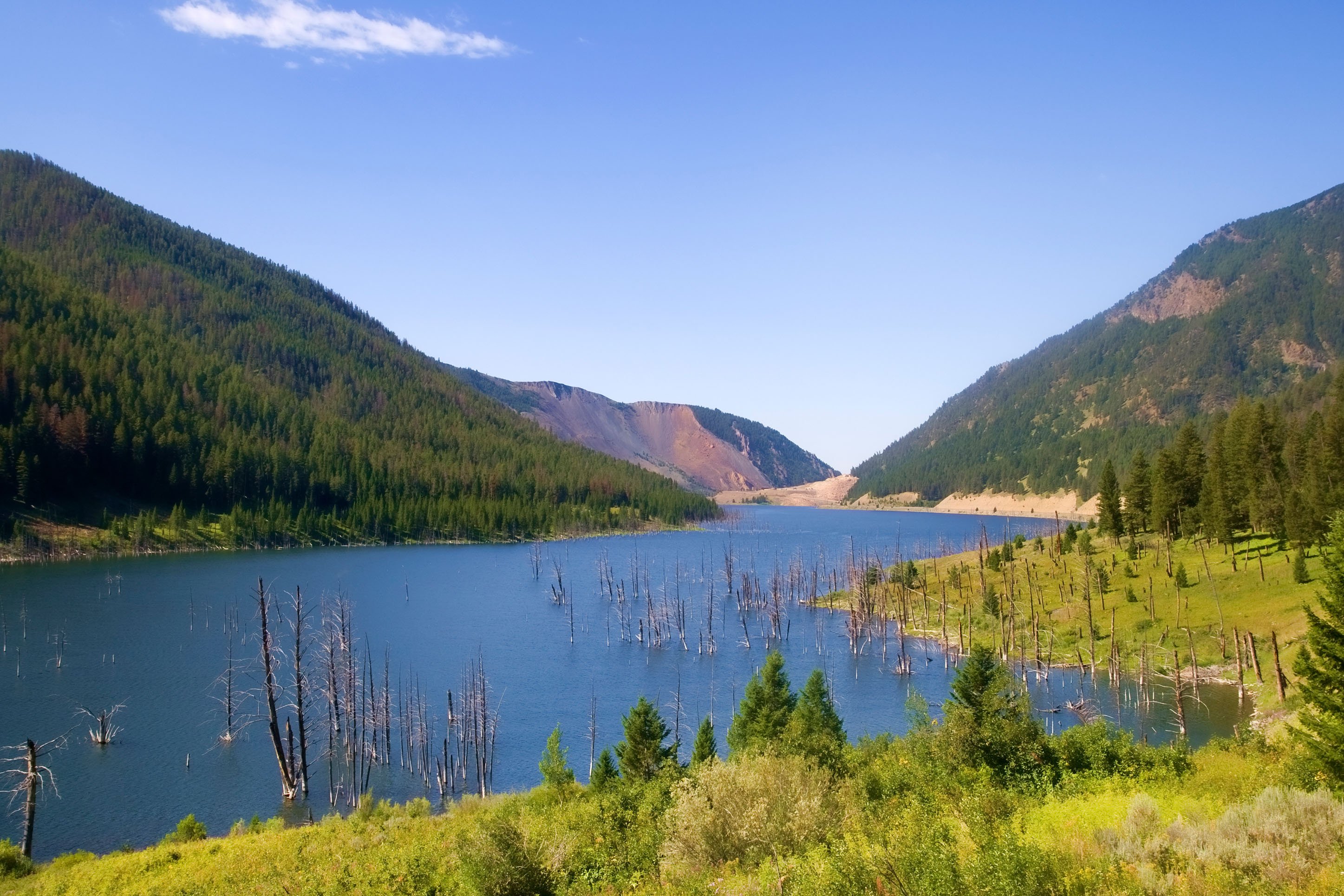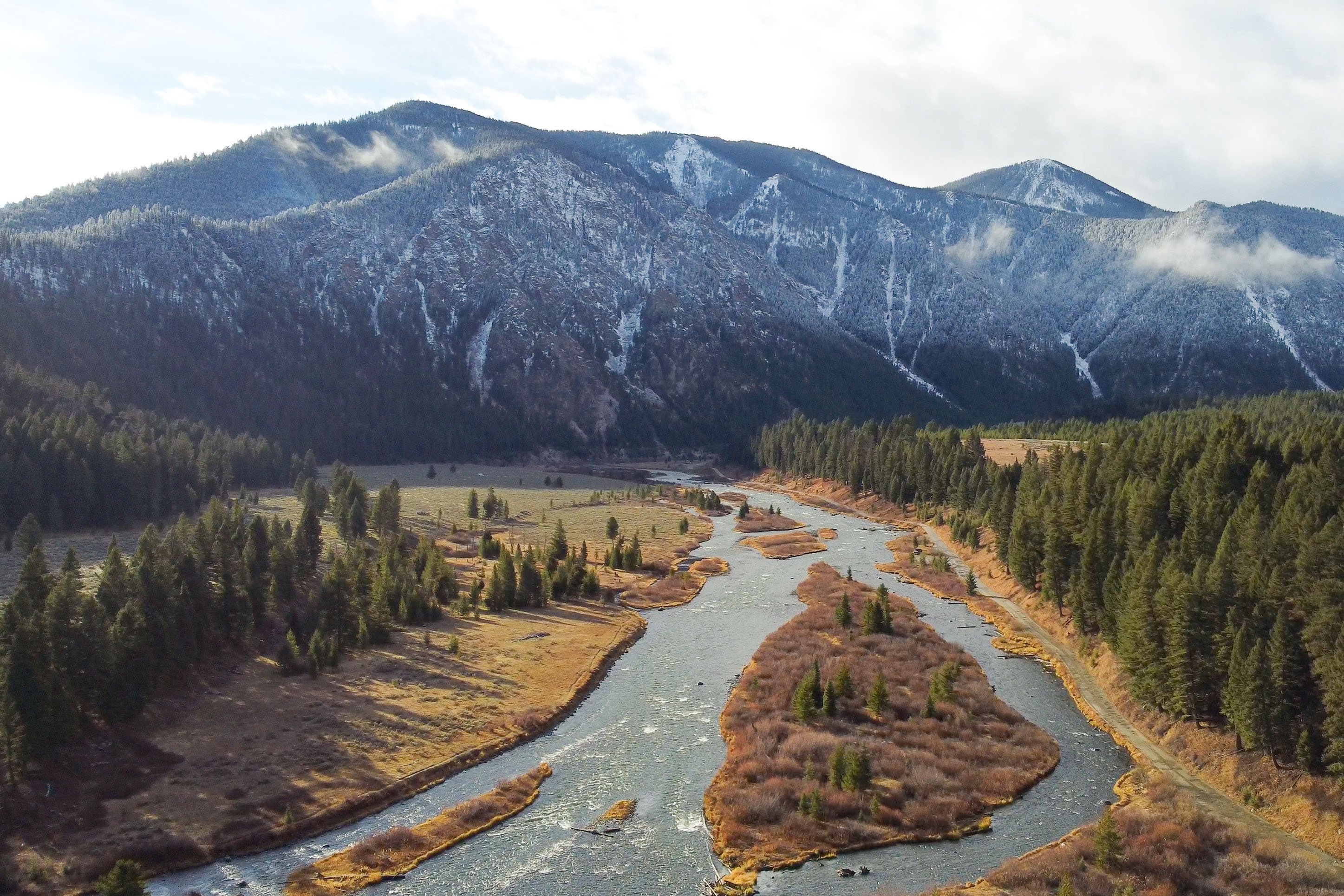History of Quake Lake
Quake Lake, (officially Earthquake Lake) sits on the Madison River, just past Hebgen Lake, and just 26 miles from Yellowstone National Park. On first glance you’ll notice the most unusual thing about the lake are the dead trees that rise up throughout. If you’re wondering how this phenomenon happened, it’s because Quake Lake wasn’t originally there.
Just before midnight on August 17, 1959, an earthquake measuring 7.3 on the Richter Scale created a landslide that brought 80 million tons of rock traveling at 100 mph down the mountain, blocking the Madison River in less than a minute. At the time, it was the second-largest recorded earthquake in the United States and is still considered one of the strongest in North America.
Called “The Night of Terror,” the trouble didn’t end with the earthquake and the landslide. 100 mph winds ravaged the area, neighboring Hebgen Lake, literally tilted, and a gigantic wall of water surged over the dam. In the end, 28 people died, and vacationers were helicoptered out from Refuge Point. Three sections of US Hwy 287 fell into the river.

Within three weeks, the lake filled in creating a body of water 190 feet deep and 5 miles long. Today, the lake is getting smaller, but you can see a ring of drowned trees along the banks, showing how deep it once was.
Shortly after the quake, thermal features in Yellowstone National Park changed. Two to three years later, Old Faithful, which regularly erupted every 65 minutes, increased the intervals to 74 minutes. Sapphire Pool, previously quiet, began erupting over 200 ft high. And Steamboat, the world’s tallest geyser, located in Norris Geyser Basin, awoke from a 50-year dormancy in 1961, less than three years after the earthquake.
Following the quake, the U.S. Forest Service set aside 38,800 acres for interpretation and education. In 1967, they opened the Earthquake Lake Visitor Center which shows both the geological and the human side of the earthquake. Sitting atop a pile of the rocks that fell, it offers panoramic views of the lake, lectures and movies, interpretive trails, and a functioning seismograph so you can see what is happening under the earth during real time.

A walking path takes you to the Memorial Boulder, which fell naturally, and now has a plaque with the names of those who died in the quake. Kids can become a Junior Geology Ranger and take part in a scavenger hunt that teaches them about the earthquake and the surrounding geology. Interpretive trails surround the lake, showing various points of interest.
In the winter, the Forest Service offers several snowshoe hikes along the Refuge Point Trail. The 1.5-mile trek is kid-friendly, and good for beginners. It’s a great way to learn about the history and explore the trail to the point where survivors were relocated. Plan for three hours and bring your own snowshoes!
The Earthquake Lake Visitor Center is open daily from Memorial Day in May through September 15th. Hours of operation are 10 a.m. to 5 p.m.
Call ahead if traveling around Memorial Day or in September.
- Seasonally at Earthquake Lake Visitor Center 406 682-7620 or
- Hebgen Lake Ranger District (off-season/winter) 406-823-6961
If you enjoyed this blog, take a look at some of our other related articles:
In our never-ending quest to keep up with all things new in Bozeman, we have been producing content for years and can't possibly update every blog when new businesses open or existing businesses close. Please reference the publish date and do your own due diligence when making plans.


